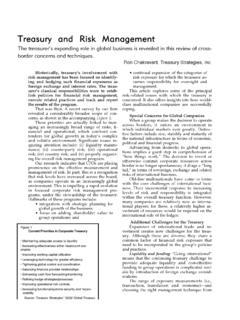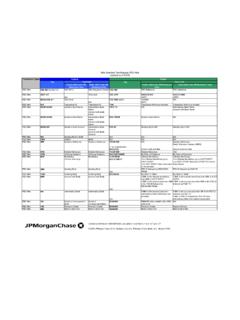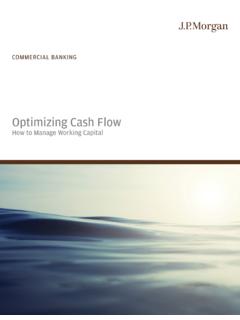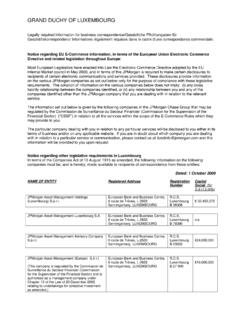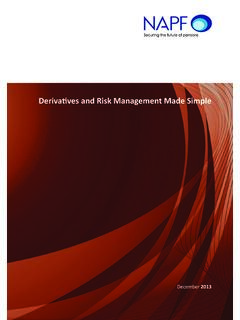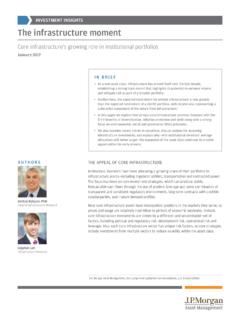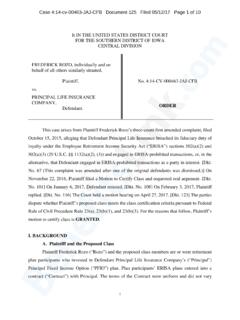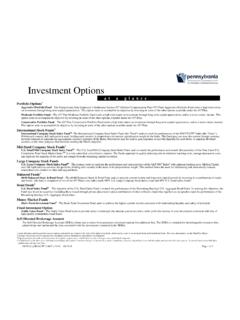Transcription of Structured Investments Solution Series Volume I: Principal ...
1 Structured Investments Solution SeriesVolume I: Principal ProtectedInvestmentsProfit from Potential Market Gains While Protecting Your investment Principal at MaturityPRINCIPAL PROTECTED INVESTMENTSI ntroductionFOCUSING ON YOUR FINANCIAL GOALS can be challenging during periods of extreme marketvolatility. While your brain may tell you that staying the course is the smartest strategy, yourstomach may lead you to make impulsive investment decisions. For many investors, finding theoptimal balance between risk and reward and having the fortitude to maintain that balanceover the long haul is no easy recent years, new Structured Investmentshave been introduced in the to help investorsmeet their objectives.
2 Generally, Structured Investments can help you achieve three primaryobjectives: investment returns with little or no Principal at risk, higher returns in a range-boundmarket with or without Principal protection, as well as alternatives for generating higher yieldsin a low-return environment. They also provide you with an opportunity to access asset classes,such as commodities and foreign currencies, which in the past were primarily available toinstitutional investors. You can use Structured Investments to achieve greater diversification, to gain or hedgeexposure to certain asset classes, or to align your portfolio with a particular market oreconomic view.
3 They provide asymmetrical returns, meaning that returns will be higher or lowerthan those derived from a directinvestment in a particular asset. Structured Investmentsusually combine a debt security with an underlying asset, such as an equity, a basket ofequities, a domestic or international index, a commodity, or some type of hybrid security. These Investments have long been popular in Europe and Asia and over the past several years,they have started to gain acceptance among investors. According to the StructuredProducts Association, nearly $64 billion in new products were issued in 2006, up from $48billion in report examines the role that Principal Protected Investments can play in your portfolioand how they can help meet a variety of objectives, including risk reduction or enhanced upside potential.
4 1. discussion contained in the following pages is for educationaland illustrative purposes only. The preliminary and finalterms of any securities offered by JPMorgan Chase & Co. will be different from those set forth in general terms in this reportand any such final terms will depend on, among other things, market conditions on the applicable launch and pricing dates forsuch securities. Any information relating to performances contained in these materials is illustrative and no assurance is giventhat any indicated returns, performance, or results, whether historical or hypothetical, will be achieved.
5 The information in thisreport is subject to change, and JPMorgan undertakes no duty to update these materials or to supply corrections. This materialshall be amended, superseded, and replaced in its entirety bya subsequent preliminary or final term sheet and/or pricingsupplement, and the documents referred to therein, which will be filed with the Securities and Exchange Commission, or the event of any inconsistency between the materials presented in the following pages and any such preliminary or finalterm sheet or pricing supplement, such preliminary or final term sheet or pricing supplement shall Circular 230 Disclosure: JPMorgan Chase & Co.
6 And its affiliates do not provide tax advice. Accordingly, any discussion tax matters contained herein (including any appendix) isnot intended or written to be used, and cannot be used, inconnection with the promotion, marketing or recommendation by anyone unaffiliated with JPMorgan Chase & Co. of any of thematters addressed herein or for the purpose of avoiding tax-related 20073 Principal Protected InvestmentsUnderstanding PrincipalProtected Investments (PPIs) Principal Protected Investmentscombine some of the features of afixed- income security, such asreturn of Principal at maturity, with thepotential for capital appreciation that youget from equities.
7 They are designed toprotect against losses at maturity, whileproviding the opportunity to participate inthe gains on an equity on the specific offering, PPIsmay offer full upside participation or theymay be subject to a maximum return. Inall cases, you forgo typically mature within one to sevenyears, and you must hold them untilmaturity to guarantee your Principal sreturn. Maturities shorter than five yearstypically have a cap or maximum , they are issued as registerednotes or certificates of deposit in $1,000denominations. PPIs can be linked to avariety of underlying assets, including anequity index, a basket of equities,commodities, or currencies.
8 Manyinvestors hold them in tax-deferredaccounts. This report focuses on PPIslinked to an equity index. Anatomy of a PPIWhen constructing a PPIthat is linked to an equityindex, the issuers invest inboth zero coupon bondsand equity call options (seefigure 1). First, they use aportion of the availableassets to structure zerocoupon bonds that match the maturity date and Principal amount ofthe PPI. Unlike regular bonds, zerocoupon bonds are issued at a discount totheir face value and do not pay means that issuers can structure abond that will return $1,000 at maturityfor an upfront investment of less than$1,000.
9 The difference between thebond s value at maturity and the amountpaid representsthe bond s impliedreturn. By investing in zero coupon bonds, theissuers have ensured that the PPI sinvestment principalis protected atmaturity. Your direct credit risk is limitedto the financial well being of the issuer (in this case, JPMorgan).Because zero coupon bonds are issued ata discount to their face value, the PPIissuers will have excess capital to put this money to work bystructuring equity call options on a broad-based equity index, such as the S&P 500 Index. A call option gives an investor theright (but not the obligation) to buy aninvestment in the index at a specific pricewithin a specific period of time.
10 The calloptions typically have an expiration datethat matches the maturity date of the zeroFigure 1: Mechanics of a Principal Protected Investment4 Autumn 2007coupon bond, alongwith a strike price, orentry point, thatmatches the currentvalue of the index. Ifthe underlying asset(the S&P 500 Index)increases in value, thevalue of the call optionwill also increase. No Free LunchAs mentioned above,PPIs allow you toparticipate in some but typically not all ofthe gains in an equityindex via a call pay for the principalprotection provided by the investment inzero coupon bonds, however, you forfeitall dividend income , and you may alsoforgo a portion of any gains in the equityindex.


